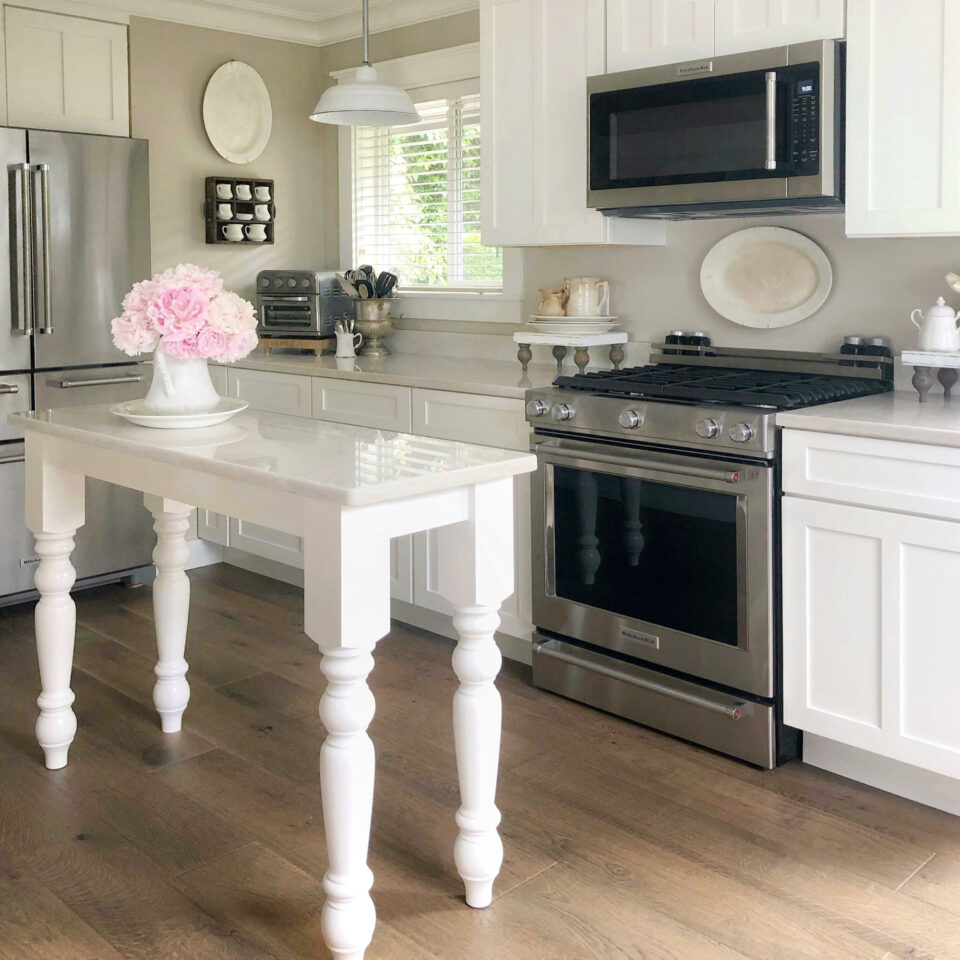The Value of a Sturdy Kitchen Area Island Leg in Developing a Practical Cooking Area
A sturdy cooking area island leg offers as a fundamental component in developing a useful cooking environment, giving essential support for both the countertop and numerous cooking area activities. As kitchens advance right into multifunctional areas for cooking, eating, and interacting socially, the choice of materials and style considerations for island legs becomes significantly essential.
Advantages of Sturdy Island Legs
Offering necessary support, sturdy cooking area island legs play an essential role in boosting the performance and sturdiness of kitchen islands - kitchen island leg. These legs not just bear the weight of the countertop and any kind of added things positioned on the island, but additionally add to the overall stability of the structure. A well-supported kitchen island guarantees that it remains practical and upright, even under hefty use, which is particularly important in busy cooking area atmospheres
Moreover, sturdy island legs can enhance the aesthetic allure of the kitchen. They supply a solid structure that can complement various design styles, from modern to traditional. This adaptability permits house owners to tailor their kitchen islands according to personal taste while making certain that the structural integrity stays uncompromised.
Along with their supportive role, robust kitchen area island legs can additionally boost safety. A stable island decreases the danger of crashes triggered by wobbling or tipping, which is especially important in families with youngsters or senior people. Solid legs can facilitate a seamless flow of activities, enabling for reliable dish prep work and social communications within the cooking area room. Inevitably, spending in strong cooking area island legs is essential for a functional and visually pleasing cooking location.
Products for Kitchen Area Island Legs
When picking materials for kitchen island legs, durability and visual allure are important aspects to think about,. The most usual products include hardwood, steel, and engineered timber, each offering special benefits.
Wood, such as maple, oak, or cherry, is a timeless option due to its strength and classic charm (kitchen island leg). It can withstand considerable weight and is resistant to use, making it optimal for high-use kitchen settings. Additionally, wood can be stained or repainted to complement different cooking area styles
Steel legs, frequently crafted from stainless-steel or wrought iron, supply a modern and industrial appearance. They are extremely solid and can sustain substantial tons while being immune to moisture and warm, which is advantageous in a cooking area. Steel legs can also be easily cleansed, enhancing their functionality.

Layout Considerations for Security
The choice of materials for cooking area island legs directly affects the design considerations for security. When creating a kitchen area island, it is paramount to evaluate the weight-bearing ability of the selected materials. Larger products, such as solid wood or metal, typically supply higher security, particularly under the stress of everyday usage.
Additionally, the leg style must include proper geometry to boost stability. A wider base raises the assistance location, reducing the threat of tipping or wobbling. Factor to consider should also be offered to the elevation of the legs; disproportionate leg lengths can cause imbalance, compromising the overall security of the island.
In addition, the distribution of weight across the island is crucial. Guaranteeing that the leg positioning straightens with the heaviest parts, such as countertops and appliances, will certainly further enhance stability.
Maintenance Tips for Durability

Cleaning up is an additional crucial element of upkeep. Relying on the material of the legs-- whether wood, steel, or composite-- ideal cleansing methods must be used. For wood legs, a gentle wipe with a moist fabric and an ideal timber cleaner will certainly aid preserve their finish. Metal legs might need a light gloss to avoid corrosion and maintain their luster.
Additionally, tightening screws and bolts routinely can make sure security and prevent wobbling. If the cooking area island experiences hefty usage, consider strengthening the legs with added braces or supports to improve longevity. Using a protective finish or sealer can secure against dampness and discolorations, extending the lifespan of the legs. By adhering to these upkeep suggestions, homeowners can guarantee their kitchen area island legs remain durable and practical for many years to come.
Choosing the Right Leg Style
Regular upkeep makes certain that kitchen island check these guys out legs stay strong and useful, but choosing the appropriate leg design is just as important for both appearances and support. The option of leg style can dramatically affect the total design and harmony of your kitchen.

Performance is an additional crucial element. pop over to this web-site Thicker legs or those with a sturdy base can support much heavier counter tops and devices, improving the island's utility. Conversely, slender legs may create a ventilated look, suitable for lighter layouts but possibly much less supportive.
Verdict
In summary, the value of strong Website kitchen area island legs can not be overstated in the production of a practical food preparation location. These legs offer essential assistance, enhance security, and contribute to the overall visual of the cooking area.
A durable kitchen island leg offers as a fundamental part in establishing a useful cooking setting, offering essential support for both the countertop and different kitchen tasks.Offering crucial support, sturdy kitchen area island legs play a critical duty in improving the functionality and sturdiness of kitchen islands. Eventually, investing in tough kitchen area island legs is crucial for a practical and visually pleasing cooking location.
Consideration needs to additionally be given to the elevation of the legs; out of proportion leg sizes can lead to discrepancy, compromising the total stability of the island.
Wood legs provide heat and a timeless look, while steel legs offer a industrial and modern-day feel.
Comments on “Change Your Room with Cutting-edge Kitchen Island Leg Layouts”